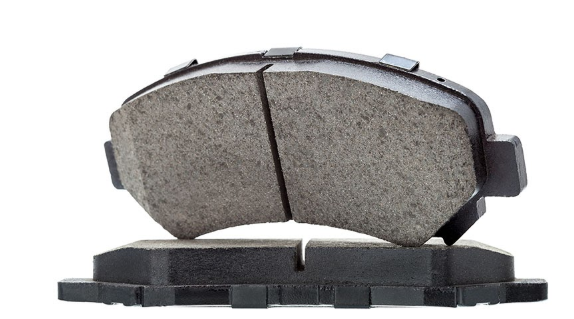Are you wondering how long a wheel alignment take? You will surely get answer to this question in this guide. But before we start let’s get to know more about what wheel alignment entails and the signs your car will show that will make you know it needs a wheel alignment.
What Is Tyre/Wheel Alignment?
The practice of matching a vehicle’s wheels with one another and the road surface is known as tire alignment. It’s accomplished by re-configuring and situating the suspension system, as well as changing key components. A tire alignment, unlike some other vehicle maintenance activities that you may handle yourself, necessitates the assistance of a skilled mechanic and the use of an alignment machine.
The goal of a tire alignment is to align the wheels and axles of a vehicle so that they all travel in the same direction. Adjusting all suspension angles that affect tire movement and location, as well as ensuring the steering wheel is correctly centered, are all part of the process. A vehicle’s manufacturer specifies recommended angles for aligning its tires, which are expressed in degrees.
The sort of alignment required for your vehicle is determined by its suspension system and how power is distributed to its wheels. A four-wheel alignment is required if you have an all-wheel-drive or four-wheel-drive car. A front-end alignment or thrust-angle alignment is required if your vehicle has a front-wheel-drive or rear-wheel-drive system.
Let us now see how long it takes for a wheel alignment..
How Long Does Wheel Alignment Take?
A wheel alignment, whether for a two-wheel-drive or four-wheel-drive car, takes an average of one hour in typical circumstances. It will take longer if the suspension system, steering bushing, track rod, or other parts have too much wear and tear or damage, as some components will need to be replaced.
How Often Should One Do Wheel Alignment?
The frequency with which you should get your wheels aligned varies greatly based on the sort of vehicle you possess, your driving patterns, and other considerations. A wheel alignment should be done every two or three years, according to most experts. The best thing to do, though, is to stick to the recommended service intervals in your owner’s manual.
If your owner’s handbook doesn’t say how often your wheels should be realigned, you should take your car to a service facility or auto repair shop at least once a year for a tire alignment exam. After one or two years of driving, a vehicle’s wheel alignment is usually somewhat wrong. However, having your car’s wheels realigned every year isn’t necessary if it holds the road effectively, doesn’t drift to one side, and has equally worn tires.
It’s crucial to keep in mind that some circumstances may necessitate more frequent tire alignments for your car. Wheel alignment is normally required more frequently in vehicles with bigger tires or performance-oriented vehicles. Additionally, whenever you replace your tires, you should consider getting a wheel alignment.
Read also: Transmission Fluid Color: What They Mean!
Is Wheel Alignment Necessary?
Tire alignment is, without a doubt, one of the most crucial maintenance activities. Your vehicle’s handling capability will be dramatically reduced if the wheels are mismatched. It’ll tug in one way all the time, making it difficult to pivot or move in a straight line. This not only makes driving more difficult and uncomfortable, but it also puts your and your passengers’ safety in jeopardy.
Furthermore, failing to adjust your wheels on a regular basis can significantly increase the expense of car ownership. Uneven tire wear can be caused by misaligned wheels, which means you’ll have to change your tires more regularly. Because misalignment can produce additional tension in your tires, it’s not uncommon for flat spots and tire blowouts to occur. In addition, mismatched wheels can damage wheel rims and suspension, affecting your vehicle’s performance and lifetime.
Signs That Your Car Needs a Wheel Alignment
After considering how long a wheel alignment take, we now want to see some of the signs your car will exibit that will make you know that a wheel alignment is needed.
Steering Wheel Isn’t Centered
Your steering wheel should be almost exactly straight if you’re driving straight down a flat, level road. Depending on the crown of the road, a small amount of variance is normally tolerated, but the wheel should be centered and straight, and the car symbol in the middle of the steering wheel should appear level to you. It’s time for an alignment if the wheel is off center by more than a few degrees in either direction. This will reset your steering wheel to its original position and may enhance overall drivability.
Your Vehicle Tilts To One Side
Vehicle pull is most noticeable while going straight down a level road, similar to the first point. It’s a popular misperception that when you take your hands off the steering wheel, the vehicle should go exactly straight. This would be true in a perfect world, but it isn’t since all roads have some degree of crowning, which causes a tiny pull to one side. Removing your hands entirely from the steering wheel is also quite dangerous. Instead, the car should be driven straight ahead with minimal steering effort. If your automobile pulls to one side or the other, have your alignment examined and fixed, which will usually rectify the vehicle pull and improve overall drivability.
Uneven Tyre Wears
Tire wear patterns can reveal a wealth of information about a vehicle’s condition. Tire wear patterns can be used by a competent technician to make educated assumptions about tire pressures, suspension condition, and alignment issues. Tires with only wear on the inside or outside edges may indicate a problem with the camber adjustment. Feathering or scalloping of the tires is a sign of a toe adjustment problem. When a professional performs a tire rotation or an inspection during a service, he or she will most likely observe tire wear. Because proper alignment extends the life of your tires, you should have your car aligned if you see any unusual tire wear patterns.
Steering Feels Loose When Driving
Poor wheel alignment could be one of the causes of your car’s steering feeling loose or unstable. When driving, this can feel like the car is roaming across the road, or it may feel incredibly loose and sloppy through curves. If you experience symptoms like these, you should have your alignment evaluated and, if required, repaired.
Steering Doesn’t Return To Center
As you continue driving after making a turn, the steering wheel should automatically begin to return to center. Of course, you should keep your hands on the wheel to help it achieve this faster and maintain control of the vehicle, but if your steering wheel doesn’t even attempt to return to center, your alignment is likely to be off. Have an alignment check done, and if necessary, a thorough alignment.
Wheel Alignment Cost
The cost of a wheel alignment varies depending on the car model, the professional mechanic servicing your vehicle, and the equipment they employ. The average cost of aligning the front or back wheels of most automobiles is from $50 to $100, depending on where you go. Expect to pay between $100 and $200 for all four wheels to be aligned. For the best results, a complete 4-wheel alignment is always suggested.
The vehicle in question and the repair location you visit are the two most important determinants in the final cost of a wheel alignment. The alignment of many luxury and performance automobiles necessitates the use of specific tools and computers, and may take longer than usual. While a car dealership will obviously be able to do alignments on their own brand of vehicle, not all independent businesses will be able to do so. A wheel alignment from a dealership will usually cost the most.
Wheel alignment prices are frequently lowest at superstores with an auto repair department, such as Costco or Walmart. After that, major retailers like Firestone, Goodyear, Discount Tire, and Pep Boys will all be in the same price range. A speciality alignment shop is typically the ideal location to go for a tire alignment because they are experts and frequently have the most up-to-date and best alignment equipment available.
Keep in mind that the technician may discover other items that need to be repaired or replaced throughout the alignment process. These can usually be handled as well, but the cost of an alignment work can quickly rise from $150 to $500 if additional repairs are required. Depending on the mileage of your automobile, certain repair providers can conduct a one-time alignment that is covered under your warranty. Some companies will offer complimentary wheel alignments in exchange for extending your warranty or paying for any more alignments for a set length of time.









